The Dam and The Damned article was originally published on July 20,2008. We are republishing it to remind the politicians of today, that while we may indulge in dhak-chop, the truth eventually surfaces.
“Development is the mantra that politicians try to shove down our throats, while destroying our life, our culture, our land and our home” – Swarnim Lepcha
The phenomenal growth of Indian economy started from 1991-92, when the then Finance Minister, Dr. Manmohan Singh accepting the doctrine of Liberalization, Privatization and Globalization (LPG) opened Indian economy, for freer and less restrictive trade with the rest of the world.
Since then, India has come a long way and it is one of the fastest developing economies in the world today. Keeping in view the rapidly growing Indian economy, the significance and importance of hydro-development is immense. And not wanting to be left out, the Indian government aided by foreign direct investments (FDIs) has immersed itself in the hasty development of hydro projects across India.
The main focus of hydro development in India is North and North-Eastern states, be it the Tehri district in Uttaranchal, Subansiri in Arunachal or Kalijhora in Darjeeling; the 21st century hydro development has begun in earnest. The potential for hydro development in India as proposed by the government is immense and a modest estimate of the same has been assessed at 84,044 MW at 60 per cent load factor – if about 148,000 MW is the installed capacity. The North and North Eastern regions contain the lion’s share of this, with 54,000 and 59,000 MW respectively. Incidentally, the proposed hydro electric generation plans far exceed India’s current production capacity, which stands at around 40,000 MW, which has been achieved over a period of 60 years after India gained independence.
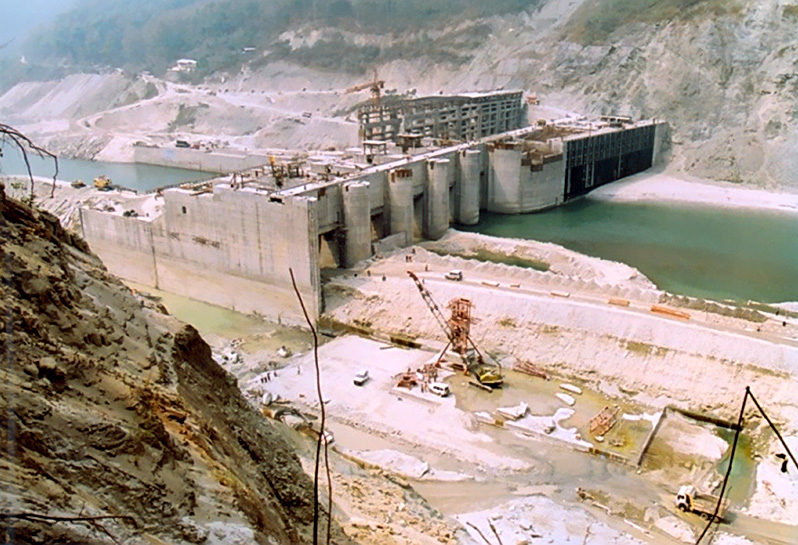
The River
Teesta is a perennial river fed by the both rain and snow-fed lake. It originates in the Himalayas from Cholamu (Tso Lhamu) Lake in Sikkim at an elevation of around 6,200 mts above the sea level and travels roughly around 415 kms before merging into the Bay of Bengal. This rapid descent of the river over a very short distance makes Teesta one of the fastest flowing rivers in the world. The slope of the river varies between 4 to 35m/km. and the velocity is about 6 m/second. The river basin is permanently covered by snow and spreads around 160 sq. kms.
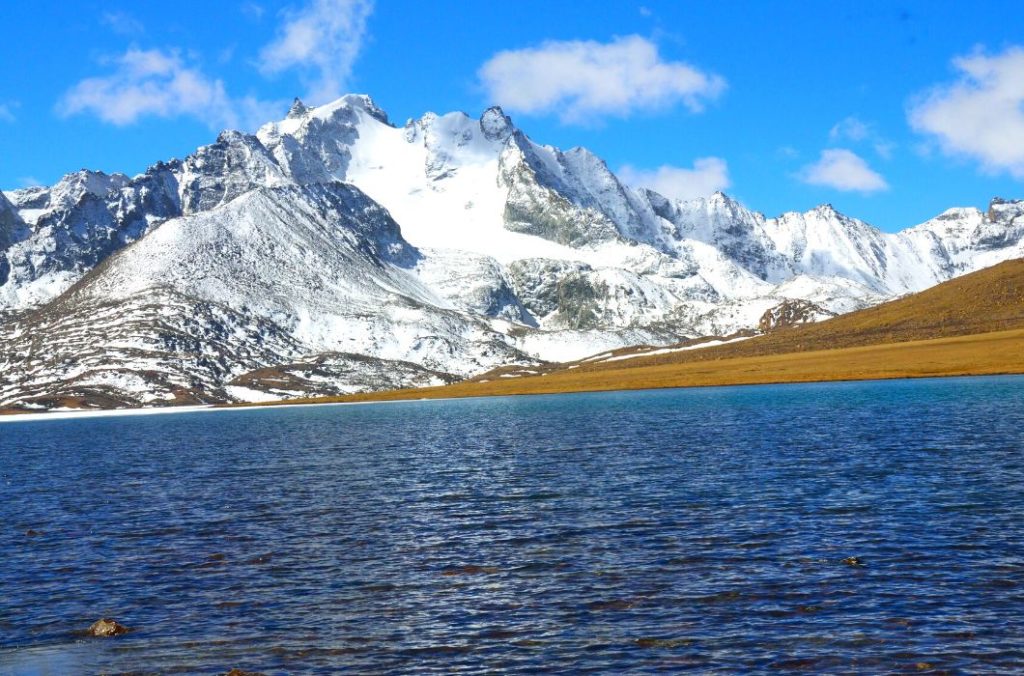
Besides this, owing to the lush green watershed area, Teesta receives huge amount of additional water through rainfall. On an average total annual rainfall in the Teesta catchment area varies between 1975-2250 mm, which puts it next to Cherapunji in terms of the areas receiving highest amount of annual rainfall (in India). Besides this, the entire Himalayan region (through which Teesta flows) is deemed tectonically unstable and the entire Eastern-Himalayan region falls under seismic zone IV and V, which is rated as the areas that have high and highest earthquake occurrence chances respectively.
The rapid growth of population aided by infrastructural development and growth in forestry related activities (including logging) in the Eastern-Himalayan region has resulted in huge amount deforestation in recent years. As a result, there has been drastic change in the rainwater absorbing capacity of the soil, and scientists/locals working in the area have witnessed more run-off of rainwater as compared to past decade. This has lead to colossal amount of sediments being discharged in the river. The Teesta basin is now one of the most landslide prone areas of the country, contributing a huge sediment load to the river. According to an academic paper written by Dr. Kalyan Rudra “…the mean annual discharge of the Teesta at Anderson Bridge is about 580 cumecs (cubic meter per second) and it declines to 90 cumecs in the lean months. The peak discharge may be as much as 4,000-5,000 cumecs…”
Teesta is a part of the eastern Himalayan complex, which has been declared a biodiversity hotspot by International Union for Conservation of Nature (IUCN). This whole region is endowed with rich biodiversity and is home to numerous indigenous species of the region.
The Dam
The National Hydro electric Power Corporation (NHPC) proposes to establish a staggering twenty seven hydro power stations in Sikkim and Darjeeling.

Source: Dept of Power and Energy Govt of Sikkim in Sikkim’s Teesta River by Avilash Raul
Note: Teesta stage III and IV are located in Darjeeling
NHPC claims that the dams being built along Teesta in Sikkim and Darjeeling are ‘low and run-of-the-river dams’. However, both the dams being built in Darjeeling, Teesta stage-III at Samco ropeway and stage-IV at Coronation Bridge are technically large dams as both are 15 meters in height. International Commission on Large Dams (ICOLD) criteria for a large dam is anything above 15 m. in height. Further, the ICOLD also considers dams between 5-15 m. with a storage capacity of more than three million cubic meters to be large dams, which encompasses the dams being built across Sikkim. Thus, NHPC is trying to mislead the general public by classifying these projects as ‘run-of-the-river’.
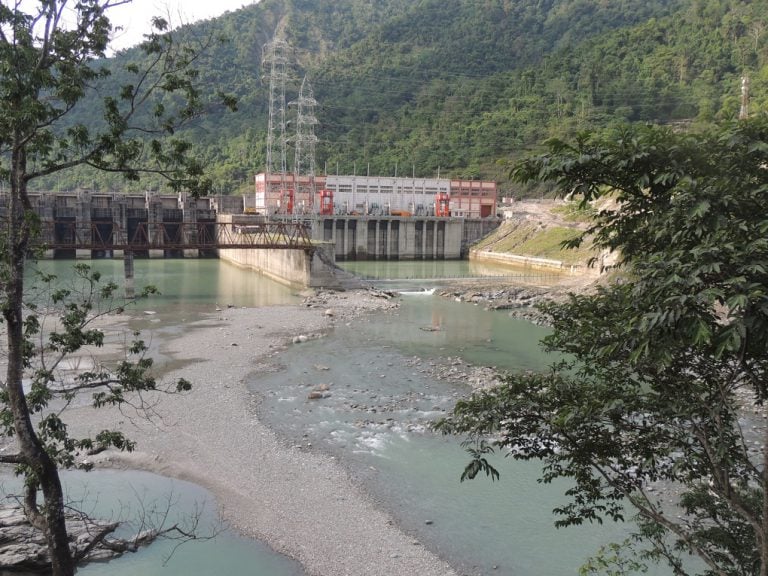
The Damned
The construction, operation and output of dams have diverse social, cultural, economic and environmental impacts, which are complex to begin with and can get further complicated if handled improperly. The NHPC has a very dismal record in terms of dealing with local people while undertaking various projects. Numerous people across India have been displaced without proper rehabilitation or re-settlement plans. These people are now considered Internally Displaced Refugees (IDRs). The projected Teesta and other dams are bound to produce large scale displacement of local people and NHPC lacks any concrete plans to resettle them. For instance, the Kalijhora which houses over 115 families will submerge due to the stage IV reservoir, yet NHPC is silent about any rehabilitation programme.
The cultural impacts of the dam constructions are immense. Imagine a situation where the locals are merely 300 individuals and more than 600 individuals come from outside to construct and operate the dam. Inundated by something exotic, the locals are bound to be influenced and may end up loosing their culture and lifestyle altogether in the long run. Further, some of the areas where dams have been proposed are protected under Article 371 of the Indian constitution, in order to protect these areas from outside influence; however, this does not seem applicable to dam proponents.
Majority of the people living in these areas have always lived sustainably and they are not yet exposed to many diseases. The chances of the locals acquiring diseases like AIDS, Cancer, and Tuberculosis are multiplied significantly with increase in the number of outsiders visiting these areas.
It is significant that Sikkim is home to Lepchas “the vanishing tribe” and the protection of their culture, language and heritage is of utmost significance, which will be seriously threatened if the Government of Sikkim allows the proposed dams to be constructed. The Lepchas and environmentally conscious people in the region have taken out rallies and gone on record hunger strikes (over 275 days and counting) to generate national and international attention to their plight, but compartmentalization of press has prevented this issue from gaining any national or international significance.
The next biggest looser will be the environment. NHPC has completely ignored the Environmental Impact Assessment (EIA) criterion, it did not conduct proper studies and decisions regarding dam construction were made long before the environmental clearance was given by the Ministry of Environment and Forests (MoEF). For instance, the stage III and IV reservoirs will submerge 156.41 ha and 359.89 ha of forest respectively, which is home to many indigenous floral and faunal species. However, NHPC merely hints this fact and calls it unavoidable.
NHPC has grossly violated the EIA norms and the studies it has undertaken has been merely to fulfill the formality, thus they are incomplete and inadequate. In many instances, locals have been threatened and cajoled for speaking against NHPC or the dams. In many instances, the public hearings have been undertaken in areas far away from the actual dam sites and notices have not been given on time and there have been instances when the ES (executive summary) have not been provided in local language (Nepali).
The average lifespan of these dams are 50 years and less depending on the amount of siltation. As stated above Teesta has massive siltation level, thus it is certain that the siltation level of the river will raise staggeringly with the construction of a series of dams and the sediment load will be trapped within the reservoirs, reducing their production capacity. This, in turn, could compel dam managers to release water during heavy rainfall, causing sudden flash floods downstream. Further, the NHPC has failed to undertake the study on the cascading effects of Dams (i.e. in case of dam breaking at the top what will happen to subsequent dams), which is likely to occur in coming days.
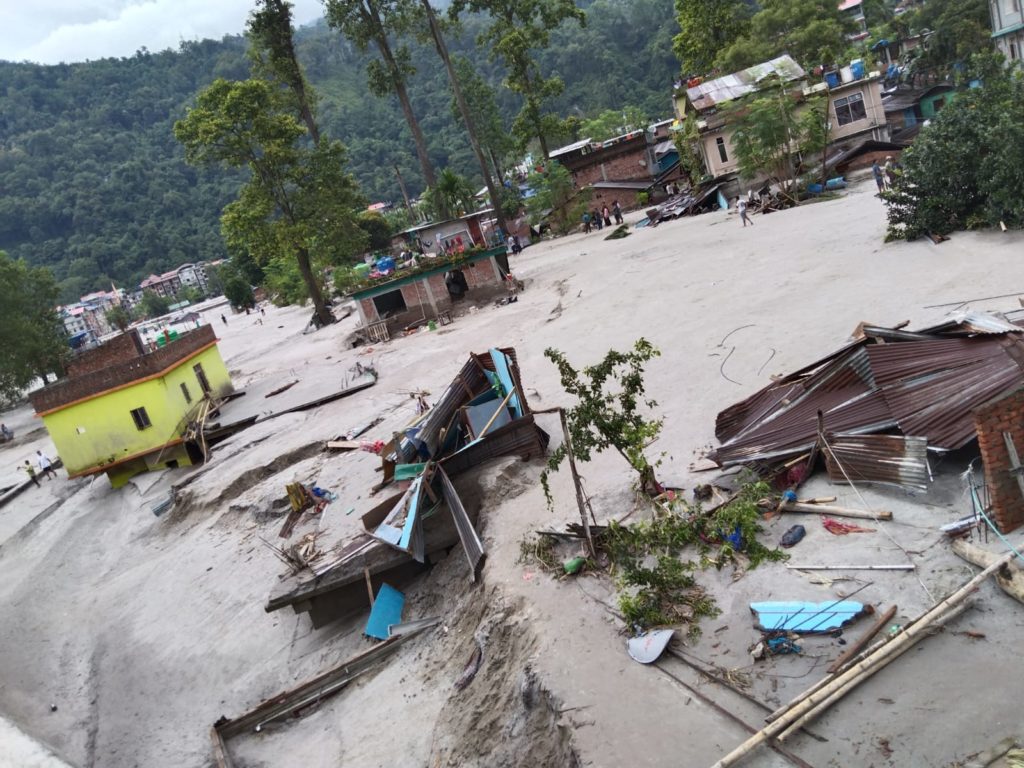
On June 25, 2006 a temporary Bailey bridge had collapsed at Stage-III site near Rambhi. Seven workers had died and 17 were feared dead due to that accident. On July 17, 2007 a minor breach in embankment at nearby Kalijhora had swept away machineries. This year it’s just the beginning of monsoon and the dam reservoir retention wall in Dikchu (stage-V) has been washed away, causing widespread fear and panic among the local residents of landslide and flood. A local daily aptly put it “…This recent disaster shows that NHPC has been following its policy of sailing sans social responsibility that has time and again put the lives of workers and adjacent population in danger… [while] paying no heed to geological & hydrological risks.”
The proponents of hydro development in India are more often than not backed by Multi-National Companies (MNCs) whose main objective is to earn as much profit as possible, without any consideration for factors such as environment, people, resources, culture or traditions. Damming Teesta along with other projects as proposed by NHPC are bound to fail, as these projects are highly unrealistic and many ground rules have been ignored and over looked to get the projects going. However, the projects are underway and it is going to cause large scale damage to both human life and natural ambiance of the entire Eastern Himalayan region, if necessary steps are not taken to check the damage being done by NHPC.
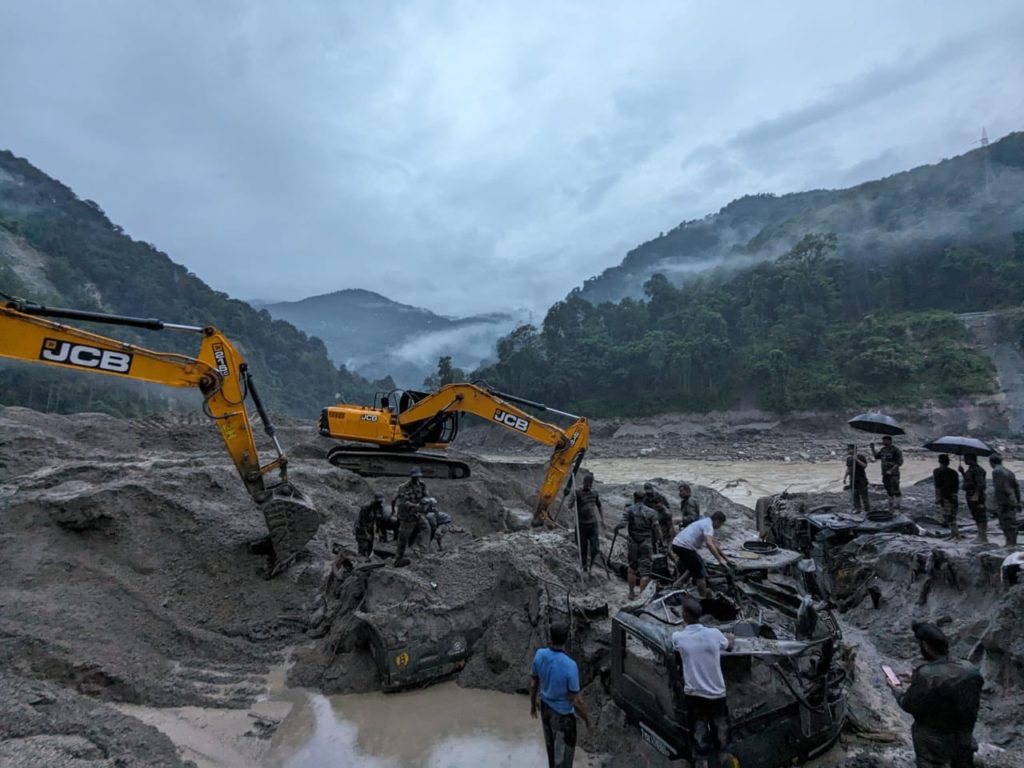
The government of Sikkim and West Bengal cite development as the incentive for exploiting our rivers, but they fail to answer development for whom? The paradigm of development as such is “dead as dodo.” In an era where world over people are hankering for sustainable development, our politician still seems to be transfixed by the idea of development.
One question that I always contemplate was asked by my teacher Prof. Milindo Chakrabarty, “Why should the hills have to sacrifice to benefit the plains, is development substitutable?”
As such, Sikkim may gain some revenue at the end of all these projects, but what does Darjeeling and its people get? Nothing is the answer. I wonder why we are keeping mum on this issue. Why should we allow our land to be destroyed and our people to suffer when all we will get from this project is despair and destruction? It is high time we asked what are the benefits of these projects? What will we gain? Remember, people in Rammam, Darjeeling are still devoid of electricity, and that place supplies electricity to whole of North-Bengal.
Perhaps!! Bapu saw this day coming when he said… “God forbid that India should ever take to industrialism after the manner of the west… keeping the world in chains. If [our nation] took to similar economic exploitation, it would strip the world bare like locusts.”
………………………………………………..
This writer is indebted to an unknown crusader whose site www.savetheteesta.com has been a constant source of inspiration.
This writer further acknowledges the dedication of groups like Centre for Studies in Rural Economy Appropriate Technology and Environment (CREATE), North-Eastern Society for Protection of Nature (NESPON), Affected Citizens of Teesta (ACT), Teesta Bachao Aandolan (TBA) and Delhi Forum, who have been fighting an endless war against government indifference, to save the environment, people and culture of our land.
This article was originally published on July 20,2008 in www.darjeelingtimes.com. Recent tragedy pics from Teesta Basin have been added to bring context to what the writer was trying to convey back in 2008.

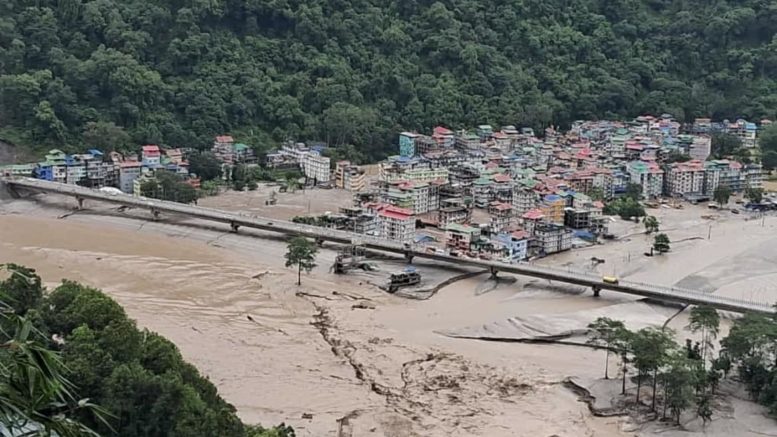

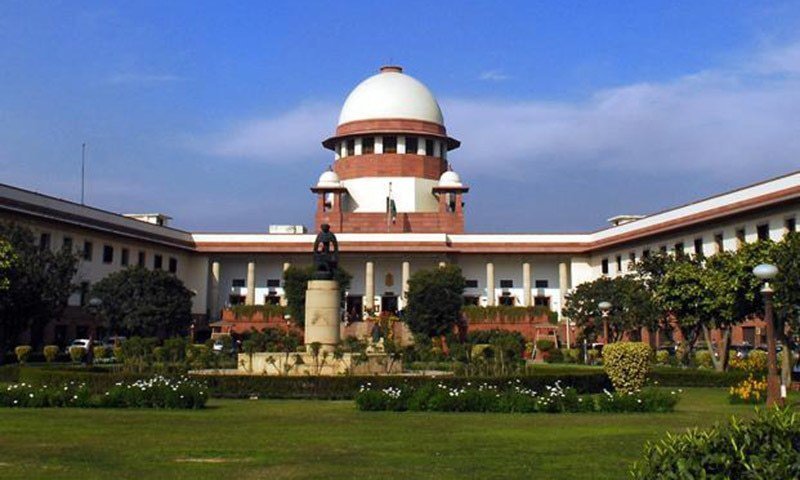

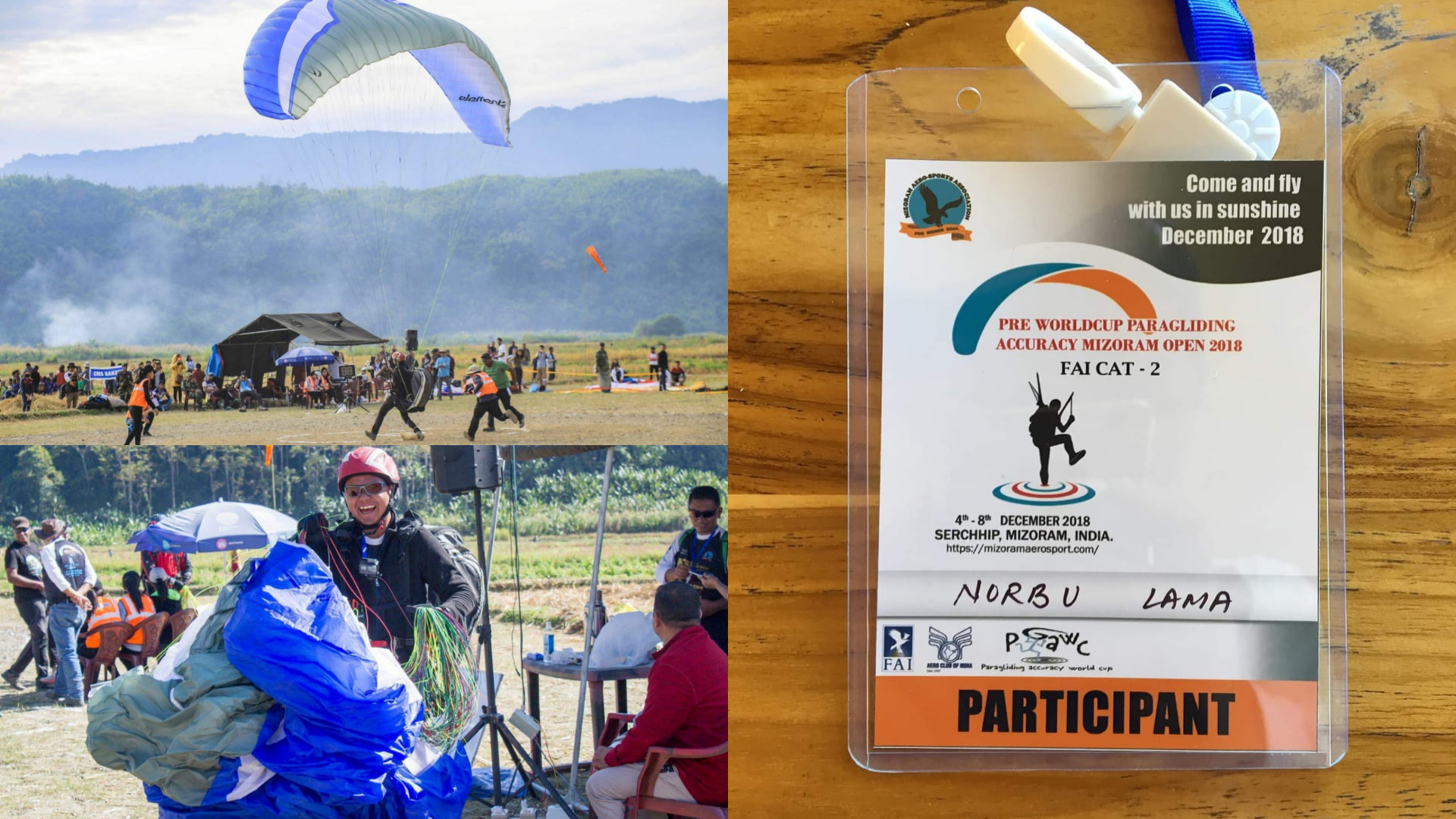
Well predicted by the author and we saw it happened today.